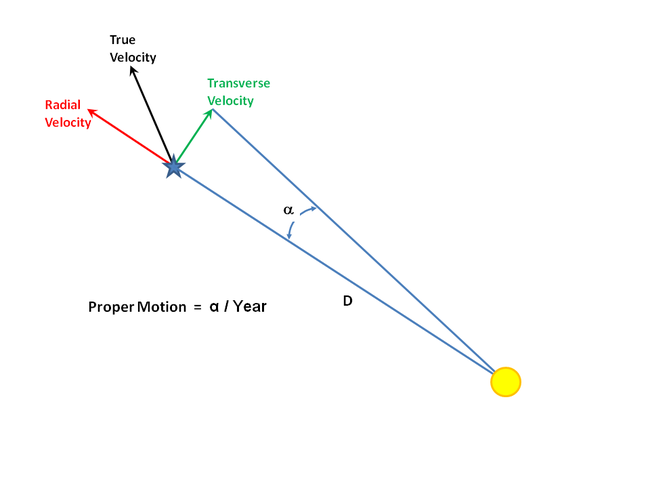Distant Nature: Astronomy Exercises
Objectives
This exercise will aid in the understanding of the motions of other stars relative to our solar system.
Equipment Materials Needed
Stellarium, scientific calculator.
Subject Introduction
While we often talk about the stars being "fixed" in the sky, this is not strictly true. Over many centuries, the stars we observe seem to maintain their "fixed" positions with respect us and to each other. We visualize these as constellations and asterisms. The constellation Cygnus or Sagittarius, as examples, look the same now as they did centuries ago. With the advent of modern astronomical tools and having used some of these for a century, we have been able to make very precise measurements of the stars and their locations in the sky.
The motion of the stars is referred to as "Proper Motion" as it is due to the true movement of the stars (it does have a component due to the motion of the Sun as well). The proper motion is a measured of the angular displacement (shift) over time. It is usually recorded in arcsec/year. Examine Figure 1., where the Greek letter alpha is the angular shift.

Figure 1. RA/Dec Coordinates